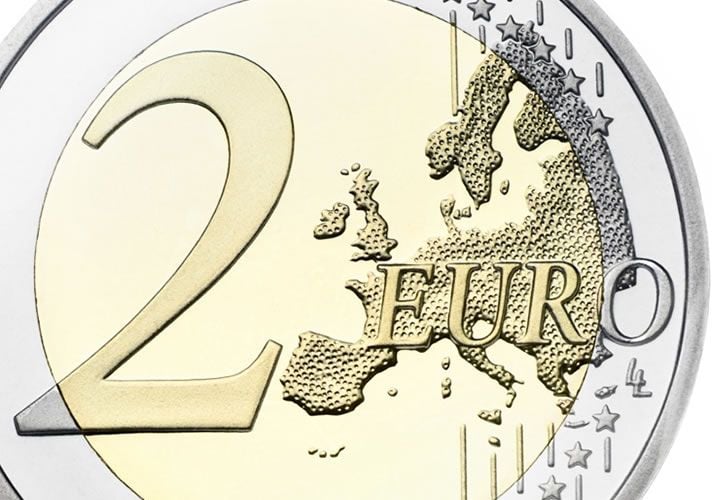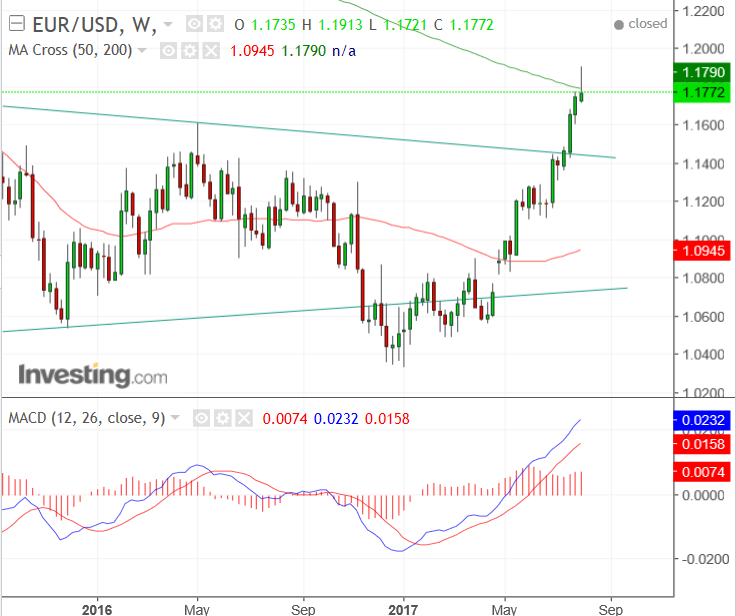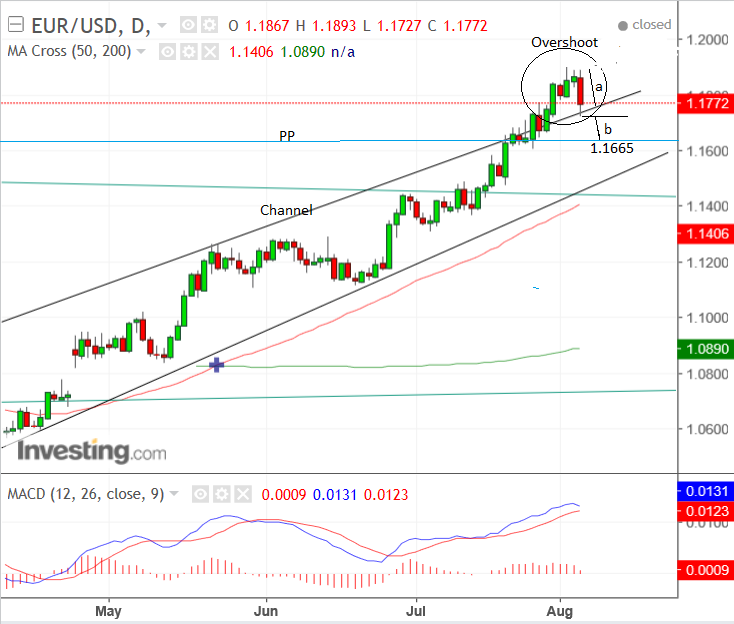Euro to US Dollar: Looking Increasingly Bearish at the Start of the New Week

The Euro to US Dollar pair appears to have peaked and possibly rolled over at the start of the new trading week, after employment data showed the US economy added a surprisingly robust 209k jobs in July.
The strong Non-Farm Payrolls (NFP) result had the effect of strengthening the Dollar which resulted in EUR/USD falling.
On the weekly chart this is reflected in a clear, bearish ‘shooting star’ candlestick formation.


The pattern is bearish but it should be pointed out that it remains 'unconfirmed' until and unless the following week (ie this week) is also bearish, only then would it be considered a strong signal of further downside.
On the daily chart the pair has overshot its rising channel and then rotated lower, selling off mostly on Friday after the labour data.
The extent of Friday’s sell-off was to a low at the level of the upper channel line at 1.1735.
The overshoot was a sign of exhaustion and therefore bearish, however, until the sell-off breaks back below the upper channel line, signalled by a move below Friday’s 1.1735 lows the up-trend remains intact, and could theoretically still break higher to 1.2000.
However, we see this as unlikely and expect instead the pair to continue lower.
A break below 1.1735 would confirm a continuation down to a target at 1.1665 where the monthly pivot is situated.
Monthly pivots are significant chart levels where prices often stall or reverse.
Traders generally use them as entry points to scalp bounces counter to the prevailing trend.

Data for the Euro
The main releases for the Euro in the week ahead will be on Friday August 11 when Inflation data – including harmonised inflation - is released for the four largest economies in the Eurozone.
This is likely to be a key release for the Euro, given how much focus there is on the European Central Bank (ECB) and expectations for them to normalize policy.
Inflation in the Eurozone remains sluggish and the sharply rising Euro is likely to be a headwind going forward.
German data is first out, at 6.00 BST, with the year-on-year rate forecast to dip to 1.6% (from 1.7% prev) in July.
French data is out at 6.45 and forecast to show a 0.7% (unch) rise in the same period.
Spanish Inflation, out at 7.00, is expected to come out at 1.5% (unch), and Italian, out at 8.00 is estimated to rise to 1.2% (from 1.1% prev).
Data for the Dollar
The main release for the Dollar this week it inflation data (CPI) out on Friday, August 11, at 13.30 BST.
This data release is important because it informs Federal Reserve policy, which sets interest rates, and interest rates impact on the Dollar.
Core US Inflation is expected to rise to 1.8% after showing a 1.7% rise in the two previous months.
As can be shown on the chart below Core Inflation – which removes the more volatile food and energy components – has been reading quite low compared to historical levels, and a poor inflation print on Friday could rattle market expectations and weigh on the Dollar.
